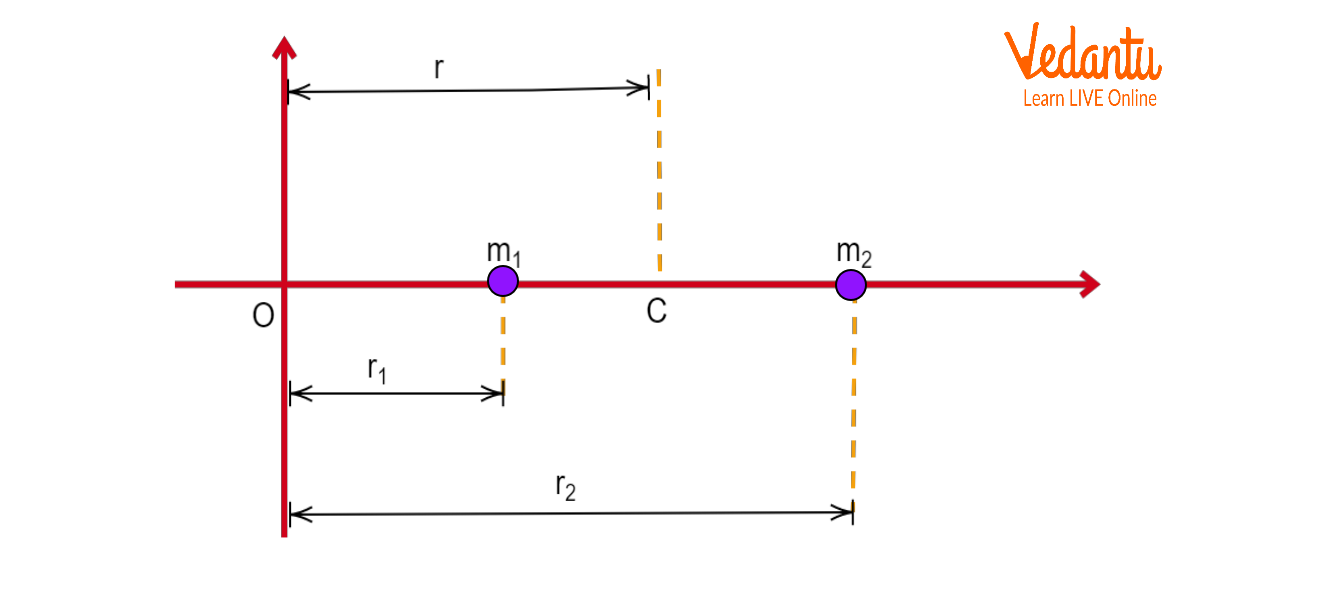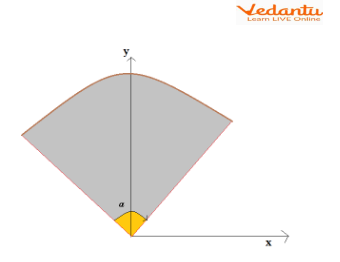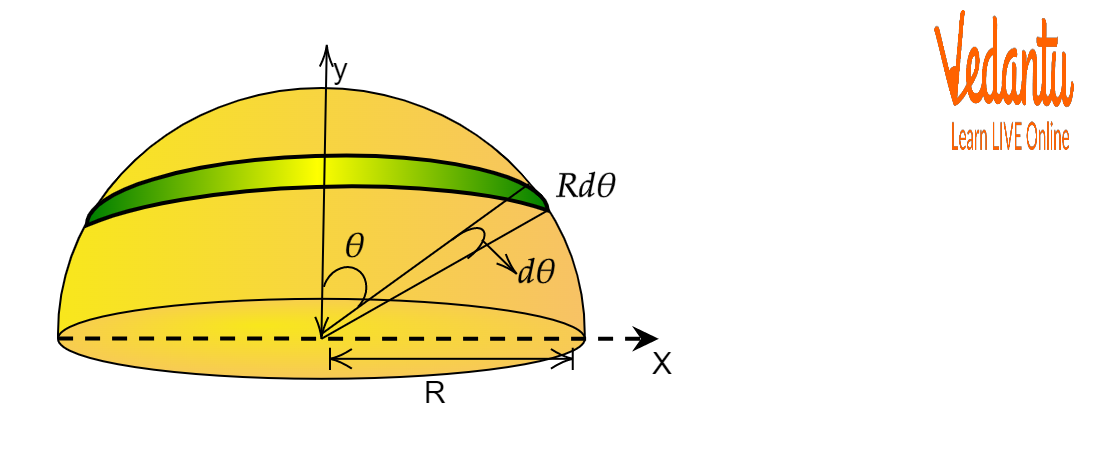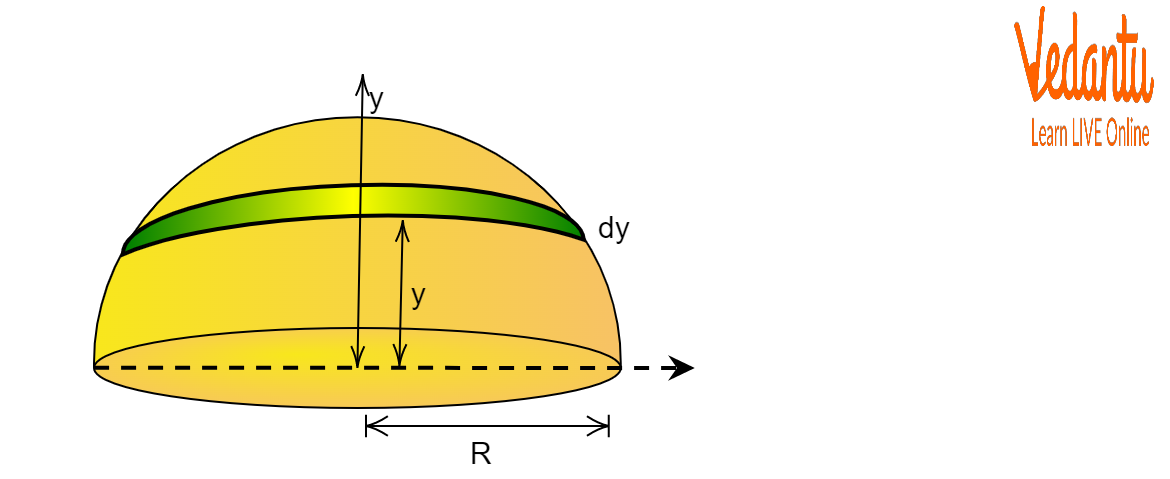




What is the Centre of Mass?
The centre of mass in Physics is explained as the point where the weighted position relative to other points of the mass of a body becomes zero, making it a point of balance. A mass in an object can be distributed arbitrarily. So basically it is a hypothetical position defined in physics itself relative to any arbitrary object or even a system of objects based on the mass distribution. At this point, force can be applied to impart the body with some linear acceleration without any angular acceleration. If a body is pivoted through the centre of mass then only the effects of rotation can be seen.
Derivation of Centre of Mass
First of all, it has to be kept in mind that now the motion of a single particle is not the only concern. Now a system of particles has to be studied which constitutes a rigid body. In a rigid body, the assembly of particles has a certain finite distance between the particles. So, for these rigid bodies there is a point where the entire mass is supposed to be concentrated.
Let us derive the centre of mass of a simplified two particle system.

Derivation of Centre of Mass
From the figure, we see two masses m1 and m2 at distances r1 and r2 respectively from the origin O. Let us assume that the centre of mass of the system lies at point C which is at distance r from origin O.
Therefore, the weighted mean at C is given as
In vector form, this can be written as
Therefore, this simplified system can be generalised to an n-particle system.
Or, the compact form is given as
The above expression is for discrete particle distribution in rigid bodies. Now, for continuous distribution, we can replace the summation sign with integration sign.
In many particle systems, it is convenient to calculate the centre of mass in x, y and z direction in the Cartesian coordinate system.
Centre of Mass of Some Symmetric Figures
The centre of masses of some symmetric figures is given below.
Equilateral Triangle

An Equilateral Triangle
The centre of mass is at the centroid that is at a distance of
Uniform circular arc or ring

Uniform Circular arc or Ring
- Semicircular Disc

Centre of Mass of Semicircular Disc
Again, for this case;
Now, we will next discuss the COM of hollow and solid hemispheres.
Centre of Mass of Hollow Hemisphere
Let us derive the centre of mass of a hollow hemisphere. We consider a hollow hemisphere of mass M and radius R. The position where the centre of mass lies is on the y-axis, which is the line passing through the middle point in the base of the hemisphere.

Centre of Mass of Hollow Hemisphere
Derivation of com of solid hemisphere
Let’s consider an elemental strip of mass
Now we have to find the expression for
Now, along y-axis, the y coordinate of COM is given as
Substitute the values of
Therefore, the centre of mass of a hollow hemisphere is at
COM of Solid Hemisphere
The same treatment as above can be applied here to find the COM. Here, we take a solid hemisphere of radius R and mass M with its centre of mass lying on the vertical axis passing through the middle point on the base and also perpendicular to the base. Again, consider an elemental disc of mass

Centre of Mass of Solid Hemisphere
The radius of the disc is given as
Therefore, the elemental mass of the disc is given as
Putting the value of r in the above expression,
Now, along y-axis, the y coordinate of COM is given as
Substitute the values of
Integrate the above expression from limits 0 to R,
Therefore, the centre of mass of a hollow hemisphere is at
Difference Between Centre of Mass and Centre of Gravity
The centre of mass, as suggested by the name, is concerned with the distribution of mass being equal in all directions without the effect of any other physical factors acting externally, like gravitational pull. Centre of gravity is the distribution of weight being equal in all directions and it has a dependency on the gravitational pull. If the gravitational field is uniform in any region then the centre of mass and centre of gravity of an object inside that field coincides.
Summary
Let us now see the conclusive points that can be drawn in this context. The main concept of the centre of mass is the weighted average or the average taken of the masses multiplied by their respective distances from a fixed reference point and is the point where a body can be balanced. The centre of mass expression for a rigid body with continuous mass distribution is






FAQs on Centre of Mass of Hollow and Solid Hemisphere - JEE Important Topic
1. State the rule of the centre of mass.
When force is applied directly on the centre of mass of an object, the object as a whole moves in such a way that all the mass is concentrated on the centre of mass, i.e. it starts behaving like a point mass. The calculation of the centre of mass for any rigid body can help in solving the mechanics problem whenever that particular body is involved. Also, it can describe its motion no matter how complicated it is or how oddly the body is shaped.
2. Is there a possibility that the centre of mass can change?
When a system is in rest or uniform motion with uniform velocity, then the centre of mass of the system is also at rest or moving with constant velocity. If at any point external force is applied on the centre of mass, then it moves with a constant acceleration obeying Newton's laws of motion. The calculation of the centre of mass for any rigid body can help in solving the mechanics problem whenever that particular body is involved and also can describe its motion no matter how complicated it is or how oddly the body is shaped.



































